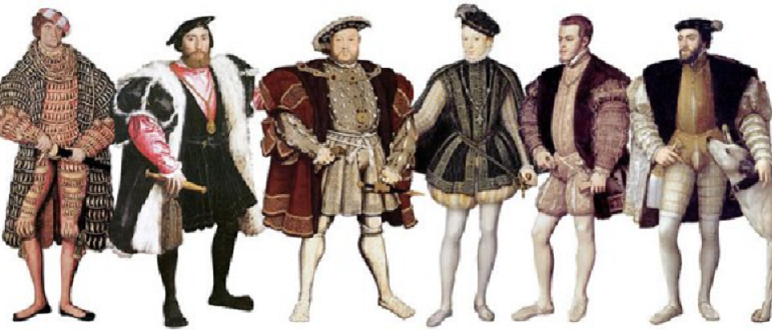Tudor Clothing for Men
Posted on 23rd January 2021
Sumptuary Laws or ‘Statutes of Apparel’ dictated what was worn and by whom. Failure to follow these laws could result in loss of property, wealth and sometimes even death.
The poor had little choice in their garments and the men mainly wore a coarse linen shirt, wool tunic and hose (stockings).
The wealthy could be much more elaborate in their dress, being able to afford silk, satin, fur, cotton, linen and wool. Wealthy men wore bright elaborate clothing, adorned with heavy chains and jewels.
Early Period
Undershirt - A long sleeved, open necked shirt, with a drawstring made of linen that came down towards the waist.
Doublet - A tight fitting, heavily padded, waist length jacket, slashed at the front with matching sleeves and wide shoulders.
Jerkin - A sleeveless jacket made of leather, cut low to the waist to reveal the doublet beneath. It often reached to the hips.
Hose (Stockings) - They both ended and were tied just above the knee.
Overgown - A front opening ankle length coat with full sleeves, often fur lined.
Hat - A basic flat woollen hat for the poor. Wealthy hats were made of silk, velvet, taffeta and wool. They sometimes had a brim which was turned up and held in place with jewel pins or brooches. Hats were decorated with ribbons, silk bands or jewelled bands. They also had feathers around them.
Later Period
Doublet - The sleeves became fuller and less tight.
Jerkin - Became closed at the neck, shorter and slightly flared.
Breeches - Short trousers to the knee, then hose for the lower part of the leg.
Ruff - Lace collar stiffened with starch.
Tagged as: Junior Tudors
Share this post:





